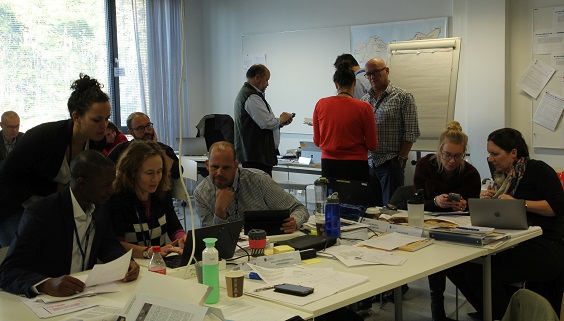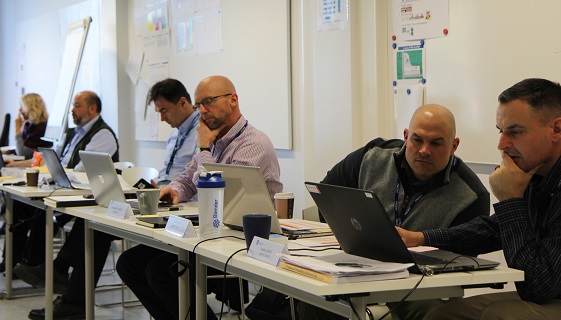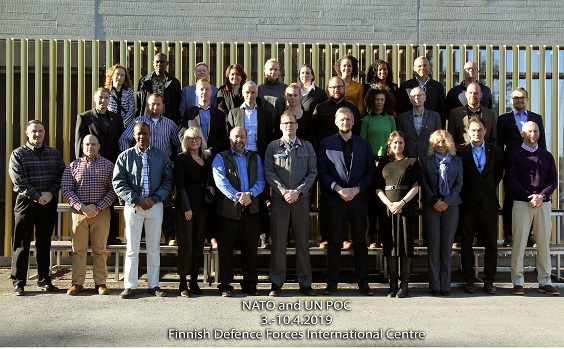NATO-UN PoC course has started at FINCENT
NATO-UN PoC course has started at FINCENT. The second NATO and UN Approaches to the Protection of Civilians (NATO-UN POC) course has started at FINCENT. The course has 20 participants from twelve countries participating in intensive days of studies and exercises to increase their practical understanding of the role of the UN, NATO and civilian organizations as protection actors in operations. The course will run from the 3rd until the 10th of April.

Focus on the protection of civilians from the threats of physical violence
The focus of the course is on the protection of civilians from threats of physical violence, including harm from their own actions. The course also enhances the military’s understanding of how military options impact civilians and how the military can support other non-kinetic actions to minimise the negative impacts of conflict on civilians.
Other learning outcomes include analysis of civilian vulnerabilities, prevention and response to conflict-related sexual and gender-based violence and cross-cutting topics such as gender, children and youth. In addition, the course will cover the analysis of complex threats, such as those arising from political violence, criminal activity, violent extremism and terrorism, and how they affect civilian populations in the areas of operations.
Understanding the roles and responsibilities between different actors in the conflict area
The course will enhance the knowledge and critical understanding of the multiple dimensions and meanings of the protection of civilians. The students are trained to understand the roles and responsibilities of the military, police and civilian actors involved in protection work and the relationships between these actors. The participants will enhance their understanding of the operational environment through learning to identify perpetrators of violence, threats to the population, and assessing the vulnerabilities and resiliencies of the populations.
The students will be familiarized with the multiple dimensions and meanings of the protection of civilians in order to enhance their knowledge and critical understanding of this topic. The goal is to enhance participants’ understanding of the operational environment from a ‘population-centric’ perspective through learning to identify perpetrators of violence, threatening the population, and assessing the vulnerabilities and resiliencies of the populations.

Cooperation between military and civilian is important
Responsible for the organization of the course are the chief instructor Virpi Levomaa and the course director, lieutenant colonel Harri Westerlund. Both Levomaa and Westerlund stress the importance of cooperation between all parties, both civilian and military, as a necessity for the successful protection of civilians in a zone of conflict. The course participants come from a variety of backgrounds, including different departments of NATO and the UN, NGOs, the armed forces and government ministries.

Organizations contributing to the course
| UN - United Nations NATO - North Atlantic Treaty Organization CIVIC - The Center for Civilians in Conflict PKSOI - United States Peacekeeping and Stability Institute NODEFIC - Norwegian Defence International Centre PAX - Peace Organization ICRC - International Committee of the Red Cross CCOE - Civil-Military Cooperation Centre of Excellence |



